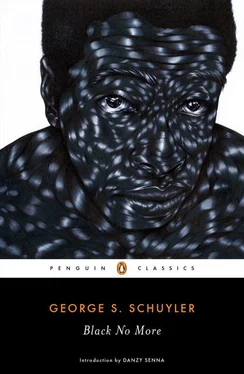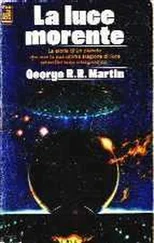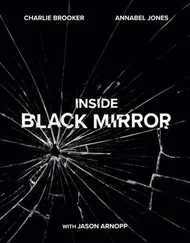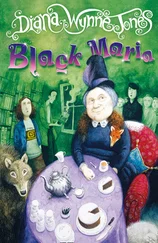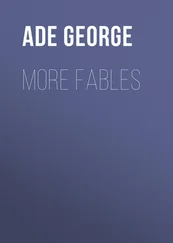As a boy he had been taught to look up to white folks as just a little less than gods. Now he found them little different from the Negroes, except that they were uniformly less courteous and less interesting…. Often when the desire for the happy-go-lucky, jovial good fellowship of the Negroes came upon him strongly, he would go down to Auburn Avenue and stroll around the vicinity, looking at the dark folk and listening to their conversation and banter. But no one down there wanted him around. He was a white man and thus suspect…. There was nothing left for him except the hard, materialistic, grasping, ill-bred society of the whites. Sometimes a slight feeling of regret that he had left his people forever would cross his mind, but it fled before the painful memories of past experiences in this, his home town.
Schuyler argued in one of his earlier writings, a 1926 editorial for the Pittsburgh Courier , that the roots of white racism were a fear of black superiority. “Whites realize that given free rein, the Negro would very likely be running the country in less than half a century…. The average white man of sense knows the average Negro is his equal and very often his superior; that is the reason why he limits the Negro’s sphere of activity.”
Black No More argues compellingly, provocatively, that the idea of blackness is necessary in order for whiteness to survive. It is much like James Baldwin famously said: “What white people have to do is try and find out in their own hearts why it was necessary to have a nigger in the first place, because I’m not a nigger. I’m a man, but if you think I’m a nigger, it means you need it…. If I’m not a nigger and you invented him—you, the white people, invented him—then you’ve got to find out why. And the future of the country depends on that, whether or not it’s able to ask that question.”
Schuyler shows all the ways white people are lost without black people to define themselves against. In one late, amazing scene in Black No More , the pastor of a failing white church in the South is grieving the loss of black people after they’ve all turned white. He is grieving the fact that there is nobody left for him to lynch—and without black bodies to lynch, the white parishioners will never know the pastor’s true greatness.
Schuyler dedicated Black No More to “all Caucasians in the great republic who can trace their ancestry back ten generations and confidently assert that there are no Black leaves, twigs, limbs or branches on their family trees.” Before it had been confirmed by social scientists, he understood that there was no such thing as race as a real, biologically determined category. But he saw how real race’s influence was, and all the ways racialized thinking—that other opiate of the masses—limited and imprisoned both black and white Americans.
In Black No More , racialized thinking has turned white people into nothing but self-satisfied buffoons. The white workers are so distracted by their hatred of black people that they will never see the true source of their oppression, the white wealthy landowners who exploit their labor. Black leaders are portrayed as corrupt—especially the high-yellow octoroons being paid a fortune to speak for the larger race, to whom they feel distant and superior. In one scathing passage Schuyler writes: “While a large staff of officials was eager to end all oppression and persecution of the Negro, they were never so happy and excited as when a Negro was barred from a theater or fried to a crisp.” The black and white working classes are shown to be victims of an elite of white supremacists and black racemen who use race as a tool to deflect attention from their own greed.
At a moment when black writers were finally awakening to the beauty of black culture, Schuyler had moved on to the part where we deconstruct race. He showed neither sentimentality nor chauvinism for his own race or any other. He hated everyone, and there is a strange purity to his loathing, a kind of beauty to his cynicism. It is his resistance to pandering, to joining tribes and clubs—to courting today what we might call “likes”—that feels so refreshing. It is the loneliness of Schuyler’s position that makes me trust it.
—
Long before Schuyler published Black No More , the seeds of his anti-authority iconoclasm and his impulse toward Swiftian satire had been set in place. He was already disillusioned with every club he had ever flirted with joining.
Schuyler had joined the military as a young, working-class black man and had risen to become a lieutenant, but he defected after a series of racist incidents. Sometime later he arrived in New York City and lived a kind of hobo rogue intellectual life, staying for a time in the Phyllis Wheatley Hotel, owned by Marcus Garvey’s Universal Negro Improvement Society—a group he considered joining but whose corruption left a bad taste. He read voraciously all things socialist, and by 1923 he was an editor and columnist for The Messenger , a magazine owned by the black socialist Friends of Negro Freedom. But he was already branching out, writing for other publications outside the black press. He published a cutting tongue-in-cheek critique of white supremacy for H. L. Menken’s American Mercury . In 1926, at the height of the Harlem Renaissance, when Negro life was finally in vogue and Negro culture and art were beginning to be fetishized by both blacks and whites, he wrote a controversial essay for The Nation called “The Negro-Art Hokum,” in which he criticized romantic primitivism among blacks and whites, famously saying that Negroes were just “lampblacked Anglo-Saxon[s]” and that there was no difference between black and white American culture, only class and geographical differences. A week later Langston Hughes was hired to write a rebuttal; in his essay, “The Negro Artist and the Racial Mountain,” he critiqued “this urge within the race toward whiteness, the desire to pour racial individuality into the mold of American standardization, and to be as little Negro and as much American as possible.” Hughes argued for a celebration of a distinctly African American aesthetic.
Schuyler’s spirit as an outsider was fully in effect. The historian John Henrik Clarke once said of him, “I used to tell people that George got up in the morning, waited to see which way the world was turning, then struck out in the opposite direction.” Being a consummate outsider, by force and by choice, left Schuyler free to parody everyone. At the root of his position as a satirist was his cultural homelessness. Though he’d come from working-class roots, he was too well read, well traveled, and successful as a writer to ever return to them. He had no solid home in the black elite either: He was too dark-skinned, for one thing, and lacked pedigree. He chafed against hero worship, orthodoxy, and the glorification of race, and was fascinated by intergroup racism and classism. He married Josephine, a white Texas socialite turned New York bohemian, and they had a baby girl, Philippa. Schuyler’s small interracial family became his only tribe—the island of the misfit toys. They lived in Harlem, in the well-to-do black neighborhood of Sugar Hill, where Schuyler published his first novel, Slaves Today , which infuriated black America. It was a harsh depiction of Liberia, the oldest black republic in the modern world, founded as a refuge for liberated American slaves. Schuyler depicted the slave trade there as being led by black Africans.
He was a man of contradictions. For someone so utterly unsentimental and sternly rational about race and blackness, he indulged his wife’s strange neoessentialist belief in “hybrid vigor”—that is, her belief that their daughter’s racial fusion of black and white represented the birth of a new, superior race. With Schuyler’s help, his wife turned their only daughter into a social experiment, raising Philippa on a scientifically prepared diet of raw meat, unpasteurized milk, and castor oil, and keeping her in near isolation from other children. The child’s strange upbringing was both a raging success and a terrible failure. Philippa learned to read at two, became an accomplished pianist at four, and a composer by five. She was a child celebrity, a kind of black Shirley Temple with a high IQ who became the subject of scores of articles in publications such as Time , The New York Times , and The New Yorker , and was roundly hailed as a genius. There is a poignant moment in Kathryn Talalay’s biography of Philippa Schuyler, Composition in Black and White, when Philippa is thirteen and her parents finally show her the detailed scrapbook they’ve been keeping about her upbringing and career—notes and articles they’ve been keeping diligently over the years. Philippa, rather than being touched, was horrified to realize, with sudden clarity, all the ways she’d been her parents’ social experiment and “puppet.” In the years that followed, she grew increasingly disillusioned with America, her own blackness, and the musical career of her youth. Like a character out of Black No More , she eventually changed her name and began to pass as white—as an Iberian-American named Filipa Montera. She spent most of her adult life overseas, still playing music, but less seriously, and trying to find herself in various romantic affairs. She eventually tried to reinvent herself as an international journalist and children’s advocate, and in 1967 she died in a helicopter crash while attempting to evacuate war orphans out of Vietnam.
Читать дальше
